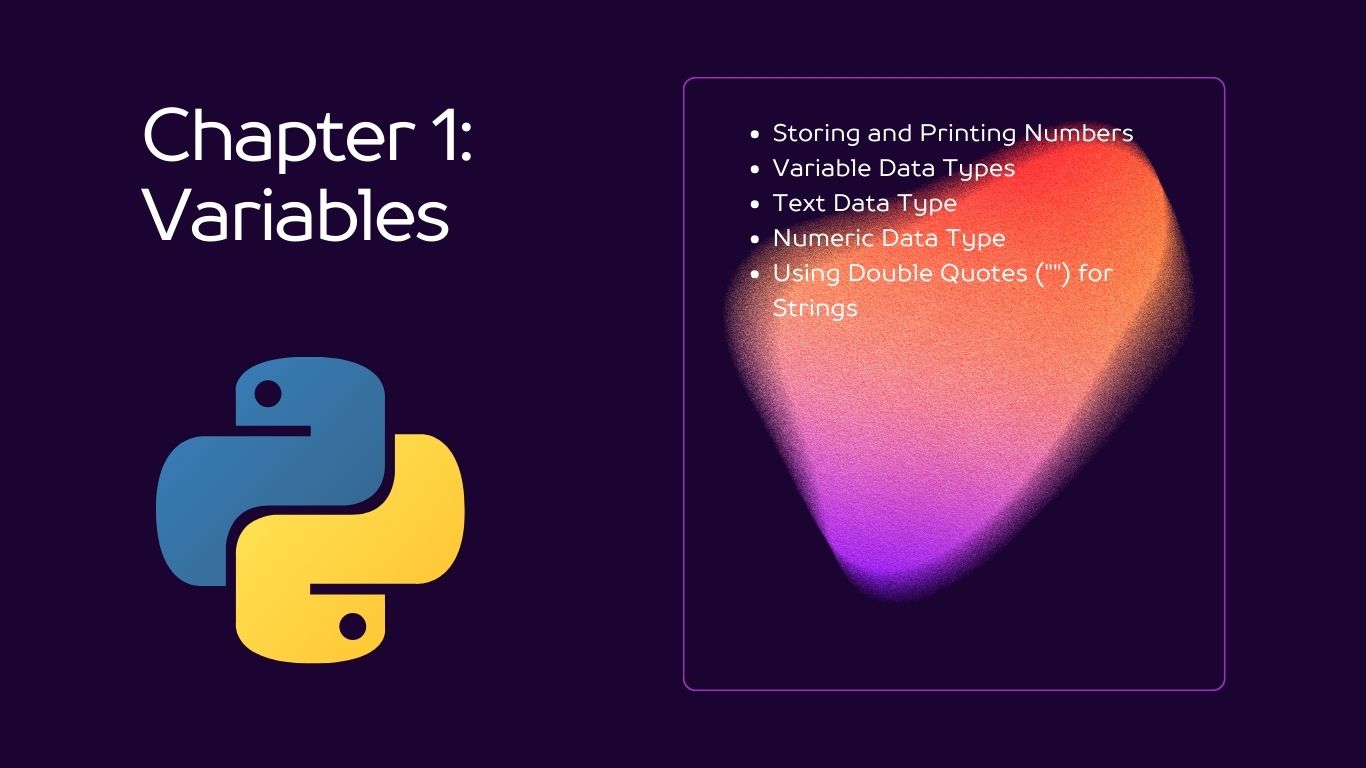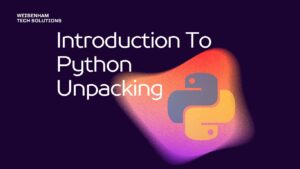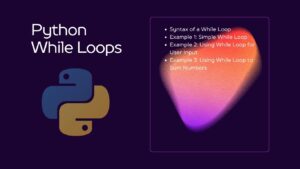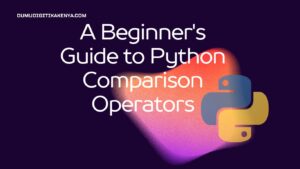Variables are an essential concept in programming. They are used to store and manage data that can be used throughout your code. In Python, variables are like containers that hold different types of information, such as numbers, text, or even more complex data structures. Understanding Python variables is essential for anyone starting their coding journey, as they serve as the building blocks for creating powerful and dynamic applications.
In Python, you’re not required to declare the type of a variable explicitly. Instead, the type is determined by the value assigned to it. This flexibility makes Python a user-friendly language for beginners, as it reduces the complexity of managing data types. You can create variables to store integers, floating-point numbers, strings of text, and even more intricate data structures. As you progress through your programming endeavors, you’ll come across various scenarios where variables become the key to solving problems and manipulating data efficiently.
With the ability to store and retrieve data, Python variables become the cornerstone of any program. Consider a scenario where you’re building an application to calculate the area of a circle. By using variables to store the radius and the value of π, you can effortlessly perform mathematical operations to compute the area. Variables enable you to reuse and modify data throughout your code, enhancing its readability and maintainability. Whether you’re working on simple scripts or complex software projects, mastering the concept of variables in Python sets the foundation for becoming a proficient programmer.

Table of Contents
Easy Example: Storing and Printing Numbers
# Easy Example
number = 10
print(number)
Output: 10
Explanation:
- We declare a variable named
numberand assign it the value10. - The
print()function is used to display the value of the variablenumber.
Example 2 : Working with Text
# Text Example
name = "Alice"
print("Hello, " + name + "!")
Output: Hello, Alice!
Variable Data Types
Numeric Data Types
- Integers (int)
Integers are whole numbers, both positive and negative, without any decimal points.
Example:
age = 25
Output:
25
2. Floating-Point Numbers (float)
Floating-point numbers, or floats, are numbers with decimal points.
Example:
pi = 3.14159
Output:
3.14159
Text Data Type
1. Strings (str)
Strings are sequences of characters, enclosed in single (‘ ‘) or double (” “) quotes.
Example:
name = "Alice"
Strings can be enclosed within either double quotes ("") or single quotes (''), and understanding how to use them effectively is essential for any programmer. In this tutorial, we will delve into the applications of double and single quotes in Python strings, and provide sample codes along with their corresponding outputs.
Using Double Quotes ("") for Strings
Creating Strings
Double quotes are often used to create strings that might contain single quotes as part of the text. For example:
text_with_single_quotes = "It's a beautiful day."
Escaping Characters
If you want to include double quotes within a string that is already enclosed in double quotes, you need to escape them using a backslash (\). Here’s an example:
double_quotes_within_string = "She said, \"Hello!\""
Using Single Quotes ('') for Strings
Creating Strings
Single quotes are useful when you want to create strings that might contain double quotes. For instance:
text_with_double_quotes = 'He shouted, "Wow!"'
Mixing Quotes within a String
You can also mix single and double quotes within a string:
mixed_quotes_string = 'This string contains both single quotes (\') and double quotes (").'
Understanding the distinctions and applications of double quotes ("") and single quotes ('') in Python strings is crucial for writing clean and effective code. Whether you’re creating strings with quotes inside them or mixing quotes within a string, Python provides flexible ways to accomplish your tasks. By practicing and experimenting with these concepts, you’ll be well-equipped to manipulate and work with strings in Python.
2. Boolean Data Type
Boolean data type has two possible values: True and False. It’s used for logical operations.
Example:
is_student = TrueOutput:
True

Putting All Datatypes Together: Sample Codes
# Storing data in variables
name = "Bob"
age = 30
height = 6.1
is_programmer = True
# Displaying information
print("Name:", name)
print("Age:", age)
print("Height:", height)
print("Is Programmer?", is_programmer)
Output:
Name: Bob
Age: 30
Height: 6.1
Is Programmer? True
Case-Sensitive
What is Case Sensitivity?
Case sensitivity in Python means that the language distinguishes between uppercase and lowercase letters. In other words, Python treats ‘VariableName’ and ‘variablename’ as two distinct entities. This distinction may seem trivial, but it has significant implications for your Python programs.
Why is Case Sensitivity Important?
Understanding Python’s case sensitivity is crucial because it affects the correctness of your code. Failing to use the correct case for variable names, function names, or keywords can lead to errors and unexpected behavior in your programs. Let’s delve into this concept with practical examples.
myVariable = 10
myvariable = 20
print(myVariable) # Output: 10
print(myvariable) # Output: 20
Summary
Congratulations! You’ve learned the basics of variables in Python. Here’s a quick recap:
- Variables are used to store and manage data in Python.
- Python determines the type of a variable based on the value assigned to it.
- You can use variables to store different types of data, such as numbers and strings.
- The value of a variable can be displayed using the
print()function. - Remember that Python treats uppercase and lowercase letters as distinct, whether in variable names, keywords, function and method names, or class names.
Conclusion
Congratulations! You’ve taken your first steps into the world of programming by understanding variable data types in Python. You’ve learned about integers, floats, strings, and booleans, and you’ve seen how to use them effectively in your code. As you continue your programming journey, remember that variables and data types form the foundation of every program you write. Happy coding!




